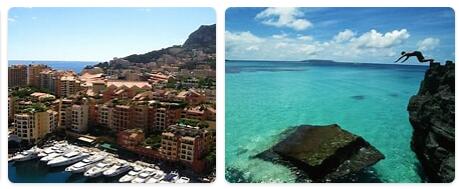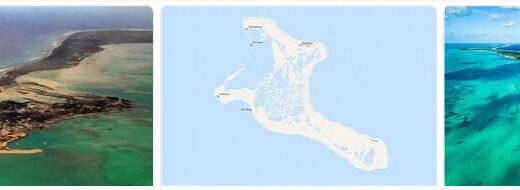Solomon Islands 2018
The Solomon Islands is located in the South Pacific Ocean with an estimated population of 685,000 people. The economy is largely based on fishing, forestry and agriculture, with the main exports being fish, timber and palm oil. In terms of foreign relations, the Solomon Islands is a member of the Commonwealth of Nations and other international organizations such as the United Nations. According to extrareference, Solomon Islands is a parliamentary democracy with an elected prime minister who serves as head of government while the governor-general serves as head of state. In 2018, Manasseh Sogavare was elected to serve another term in office as Prime Minister of Solomon Islands.
Yearbook 2018
Solomon Islands. According to Countryaah.com, Honiara is the capital city of Solomon Islands, a country located in Melanesia. Solomon Islands tropical forests are about to disappear, according to an alarm report from the environmental organization Global Witness. Harvesting is almost 20 times faster than the recovery, and at that rate the islands may have lost their forests by 2036. The reason is the huge demand for timber in China, where most of the timber exports go.
- According to Abbreviationfinder: SLB is an three letter acronym for Solomon Islands.
The country’s large coconut crops were threatened by invading rhino beetles, which spread from island to island and killed the trees. During the year they reached the Russell Islands, where the southern hemisphere’s largest coconut cultivation is located.
During the year, the Australian Government decided to fund a 400-mile high-speed Internet cable to the Solomon Islands. The decision was made to prevent the project from being implemented by a Chinese state-owned company, which had previously signed an agreement with the Solomon Islands Government.
A controversial ban on selling and even chewing betel nuts was introduced during the year. The nutshells and the red mock locks on the streets are seen by the authorities as a stain, but the ban proved difficult to enforce.
Crocodiles caused more and more deaths on the islands’ coasts and in rivers. In September, at least five people, including children, were killed during the year by crocodiles.
SOLOMON. – Archipelago of Oceania, between 154 ° 5 ′ and 164 ° 20 ′ E., and between 2 ° and 13 ° 30 ′ S., belonging to Melanesia. Due to its geological characteristics it is part of an arc which, with other island groups towards the SE., Marks a probable ancient continental chain, according to the Suess hypothesis, validated so far by the series of intrusive green rocks, which are found with a certain continuity in the neighboring groups. Recent volcanic activity is still evident, in its current phase, both for active volcanoes such as Bagana, on the island of Bougainville, and Savo, active in historical times, and for various others whose latent life is likely. The original corrugation and volcanic activity contributed to give the islands a varied and rugged relief, which is matched by the trend of the near-by bathymetric altitudes. The greatest height in the archipelago is 3100 m., In the island of Bougainville: in the same island there is also a peak of 2360 m., While they reach 2440 m. Guadalcanar, 1300 Malaita, 1250 San Cristoforo, 1189 Isabella. And each island has various minor peaks, which mark its ridge line with crude relief. The depths are, as almost always in the Pacific, sharp in the rapid fall: between many of the islands pits of over 1000 m are engraved. Compared to the remains of the same supposed ancient disappeared chain, there is a clear detachment: they are over 4000 m. towards the Santa Croce, over 5,000 a little further south, towards the New Hebrides, considerable depths all the more when viewed as an interruption of a once united world. Towards the Bismarcks then, the depth suddenly becomes abysmal:
The coral constructions are not very developed, except on the island of Isabella where they measure about 200 km. The proximity to the Equator places the islands under the direct influence of the trade winds; however there is a seasonal inversion of the dominant direction of the winds, due to the action of the Australian continent, on which a cyclonic area forms in summer (January-February), with consequent seasonal air currents NNE. on the Solomons, canceling the action of the trade winds, an action that resumes in full in the winter (July-August) following the formation on the continent of an anticyclonic area, which does not make its influence felt very far from the coasts, and allows it to dominate the SE trade winds. all over the South Pacific. A similar inversion, due to more complex causes, is noted in the dominant sea currents, coming from NO. in summer, from SE. in winter, when the sudequatorial current reaches to include the waters of Melanesia.
The proximity of the Equator also heavily influences the climate: without reaching the excesses of New Guinea, however, there is 3178 mm of rain per year in Tulagi, and the temperature, although there are no continuous observations, is estimated at a summer average of 30 ° and winter 26 °. The vegetation is therefore clearly equatorial, with forests favored by the very high hot humidity; the mangroves along the sea are characteristic. The fauna is of the Papuan type, that is, with the absence of higher animals, and with a species of marsupial – the cusco – which finds here the extreme area of diffusion: the bats alone are abundant, as there is no obstacle to the sea for them. Characteristic of the archipelago, a small crocodile, extreme eastern avant-garde of the group. As for the birds, the Solomons have,
The Solomon Islands were discovered in 1568 by Hernando Gallego, pilot of the Spanish expedition of A. Mendaña, who wanted to give them the biblical name recalling the town of Ofir. The islands were then forgotten for many years, so much so that in 1768 LA de Bougainville discovered them again, followed by other expeditions in 1788 and 1792 that completed their knowledge. Since then, the Solomons have been frequently visited, also starting a trade in local products, among which coconut stands out with 137,843 pounds in 1932-33, vegetable ivory with 8818, trochus shells with 19,103, timber with 4943. Total exports Lg. 189,888, of imports Lg. 168.261. Ships entered in 1932-33 for 74,854 tons.
The Guadalcanar Islands, Malaita, Isabella, San Cristoforo, New Georgia, Choiseul, Shortland, Mono, Vella Lavella, Ronongo, Florida and many minors, depend as British protectorate on the Resident Commissioner, based in Tulagi (Florida); Bougainville, Buka and smaller ex-Germanic neighboring islands are mandated by Australia (Mandated Territory of New Guinea). Area of the protectorate sq. Km. 28,479, with (1931) 90,719 Melanesian natives, 497 Europeans, 193 Asians; area of the mandate 8,803 sq. km., with 38,887 residents indigenous and 190 between Europeans and Asians.



